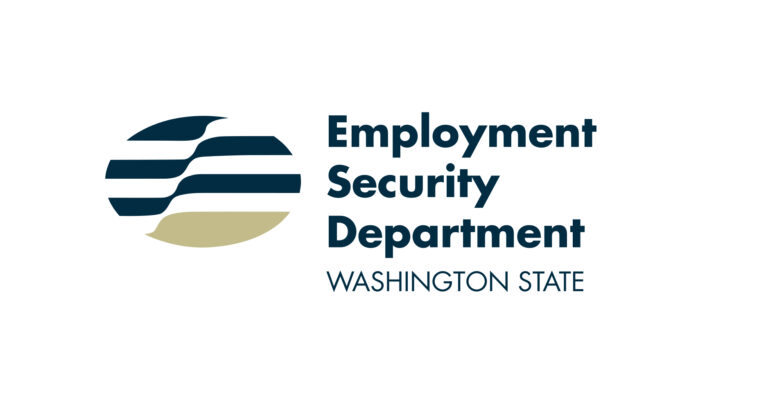Rebecca Grady, Research Manager for Leave and Care at the Washington Employment Security Department (ESD) elaborates on the department’s relationship to the state’s Paid Family and Medical Leave Program, the importance of training and evaluation, and shares advice for future progress.
What is the Employment Security Department’s role in the Washington Paid Family and Medical Leave Program? How is the Washington program different from other states’ programs?
The Employment Security Department (ESD) is the agency that implemented and operates the Washington Paid Family and Medical Leave (Paid Leave) program. Staff at ESD process applications for leave, approve benefit payments, work with employers on their program responsibilities and small business assistance, and so on. One of the biggest ways in which WA Paid Leave is different from other states’ programs is that Washington was the first state to build family and medical leave from scratch, rather than adding family leave to a long-standing temporary disability program. When the legislation creating the program passed, it was also noted for comparatively generous benefit lengths, progressive wage replacement rates, costs shared between employers and employees, and bipartisan legislative support.
We have learned from previous states and from the Washington State program that community outreach is a very important contributor to PFML uptake. Tell us about the trainings you provide to community organizations. What does the training consist of and how has it helped these organizations in their outreach efforts?
The trainings we provide are typically tailored to an organization and their needs. For example, organizations providing direct Paid Leave application assistance to clients need a deeper dive on the technical processes and program requirements. Organizations doing more general education and promotion may need more of key program components and messages to share. Organizations working more with the employer community tend to want additional detail about quarterly reporting.
Depending on the community needs, we also sometimes partner with other organizations that can provide related information. For example, with the Time to Bond grantee organizations in Pierce and Yakima counties, the Northwest Justice Project, MomsRising, and Economic Opportunity Institute contributed legal and advocacy perspectives and ESD focused on technical program processes.
We’ve heard from organizations that a deeper understanding of the program helps them in their outreach to better promote the program, serve as a local trusted messenger educating communities about WA Paid Leave, and to feel more confident in the information they’re sharing.
This is also an area where we’re actively growing. Right now, we have fairly limited capacity but try to say yes to as many events as possible. As we build capacity to support this work, you’ll see more of this kind of outreach and technical assistance happening.
How critical is the evaluation piece of the project? How do you envision incorporating these continued learnings into efforts throughout Washington state?
I may be biased as the WA Paid Leave research manager, but I see evaluation as an inherently critical part of the project. Without any mechanism to assess what’s happening and collect and share learnings, we wouldn’t know where to make improvements or whether any changes we make are actually helpful. Learnings from the Perigee grantees are currently informing design of our scalable statewide approach to community organization partnership. And we’ll be building in mechanisms for learning and evaluating as we develop the statewide work.
We’ve also had crucial learnings from the early program research and evaluation work Perigee supported. For example, partnering with UW, we learned more about patterns of work around a birth and that some groups may consequently be less likely eligible for WA Paid Leave to bond with a new child. They also made recommendations about a statewide awareness survey – which informed a survey we conducted last year – and assessed options for examining the impact of Paid Leave on health outcomes.
What did the funding from Perigee mean to ESD and to the PFML program overall?
The funding from Perigee was crucial to our ability to actively conduct early evaluation of the program and to set us up for future success in longer-term evaluation projects. For example, Perigee funds meant we could start building a Paid Leave research and evaluation team right from the start in 2020. In having a Perigee-funded position early on, we were able to demonstrate the benefit of that type of role, successfully obtaining state funding to support and grow that work in the following year.
We also had important learnings from our Perigee-funded partnership with UW and the Evaluation Consulting Group, which brought together academic researchers, state program folks, and community organizations and advocates to guide evaluation priorities and approaches. And of course, the Time to Bond community organization grants in Peirce and Yakima counties not only supported those communities over the past three years, but also are informing development of statewide outreach and technical assistance.
What advice would you give to other states that are launching PFML programs?
Building partnerships are key – from public-private-academic engagement, to local community-based organizations, to employer resource organizations, payroll and HR associations, advocates, and other state agencies, and anyone else intersecting with your program. Implementation timelines are often very short, but the time invested in these partnerships will enable your success and help you to see your own blind spots.
Also build an intentional internal organizational culture, focused on learning, iterative improvement, and putting people and equity at the center of program design and implementation. With that foundation, states can build programs that truly serve our customers.
Learn more about the PFML Uptake Initiative.
